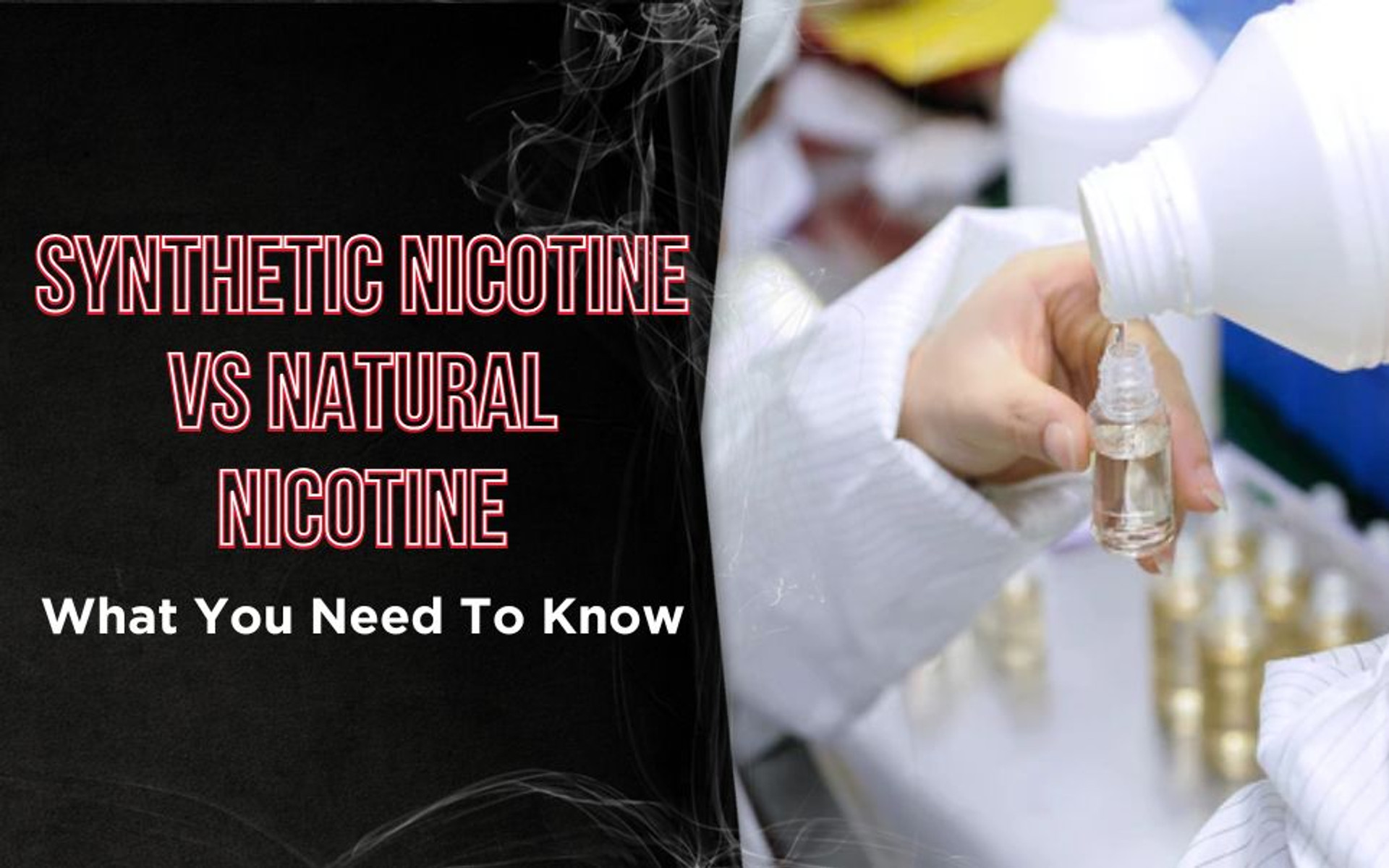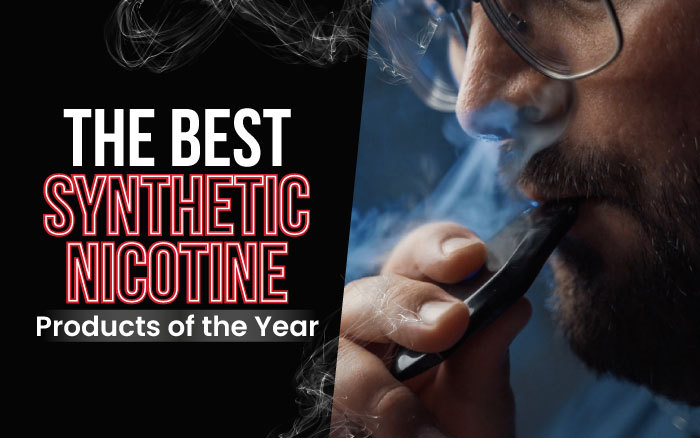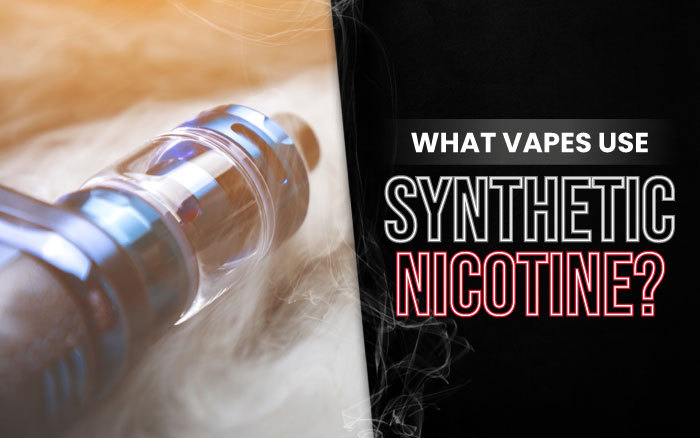Synthetic Nicotine vs Natural Nicotine: What You Need To Know
Estimated 0 min read
In the world of vaping, synthetic nicotine has been gaining ground, from a niche option in 2016 to a rapidly growing alternative today. If you’ve wondered how it compares to traditional tobacco-derived nicotine (or what the shifting regulations mean for retailers and users) this article has you covered. Here’s your up-to-date guide to synthetic nicotine vs natural nicotine.
Table of Contents
- What is Synthetic Nicotine?
- Regulations Impacting Non-Tobacco Nicotine Products
- Production Costs
- What the Future Holds for This Type of Products
- Products We Offer With Synthetic Nicotine
- Conclusion
What is Synthetic Nicotine?
Synthetic nicotine (also known as tobacco-free nicotine (TFN)) is lab-produced nicotine that does not use tobacco plants as its source. It shares the exact chemical structure (C₁₀H₁₄N₂) with natural nicotine but is created via chemical synthesis.
Key advantages of synthetic nicotine:
-
High purity levels (often >99%), since it’s not extracted from plant material.
-
Zero tobacco-related impurities, making it cleaner tasting.
-
Better scalability, no need for crops or extraction processes, so manufacturers can scale supply more flexibly.
Today, the most common forms include the R+S isomer combination and the S-only isomer, with the S-isomer being the more potent and bioavailable form.
The Difference Between R+S Isomer Combination Synthetic Nicotine and S Isomer Synthetic Nicotine
When a nicotine molecule is created, you get two stereoisomers that are identical to each other. In natural nicotine or nicotine derived from tobacco, the most prevalent of these isomers is the S isomer, which creates the physiological effect people experience when consuming nicotine. However, the R isomer is also found in the nicotine derived from tobacco but found at much lower levels. Researchers believe it to have no effects on the body.
The main difference between R+S isomer combination synthetic nicotine and S isomer synthetic nicotine is potency. With the S isomer being up to 2x times more potent than the R+S isomer combination synthetic nicotine.
Regulatory Landscape Shifts in 2025
The regulatory climate around synthetic nicotine has transformed in recent years. Since April 2022, under updated authority granted by the Federal Food, Drug, and Cosmetic (FD&C) Act, the FDA now regulates synthetic and tobacco-free nicotine products just like traditional tobacco-based items.
What That Means Now:
-
Synthetic nicotine products must submit Premarket Tobacco Product Applications (PMTAs), just like traditional vapes.
-
Retailers and manufacturers must ensure compliance with labeling, marketing, and age-verification rules.
-
Ongoing scrutiny continues, with more onus on demonstrating safety and manufacturing standards for both synthetic and natural nicotine products.
Cost Comparison
Still, synthetic nicotine carries a price premium, though costs have come down since it first entered the market:
-
Natural nicotine: Roughly $100 per liter of 100mg/ml (enough for ~18,000ml of 6mg e-liquid).
-
Synthetic nicotine (R+S blend): Now closer to $200–$220 per liter at similar purity levels.
-
S-isomer synthetic nicotine, being more potent, is relatively more cost-efficient for vape manufacturers, since they need less to achieve the same effect.
While still pricier, the gap is narrowing, making synthetic nicotine increasingly viable for mainstream products.
| Pros & Cons | Synthetic Nicotine | Natural Nicotine |
|---|---|---|
| Purity | Ultra-high, fewer impurities | Contains plant-derived contaminants |
| Regulation | Fully regulated under FD&C (2025) | Long-established regulation |
| Flavor neutrality | Cleaner, crisper flavor | Slightly earthy or chemical aftertaste possible |
| Cost | Higher, but closing the gap | More economical for bulk users |
| Supply stability | Stable, not tied to crop yields | Prone to volatility based on farming/weather |
Who Uses Synthetic Nicotine & Why
-
Flavor-forward brands that want the cleanest base for complex flavor blends.
-
Retailers facing PMTA delays or denials for traditional nicotine, synthetic options offer alternative product paths.
-
Consumers seeking purity, especially those sensitive to taste or allergic to tobacco byproducts.
Future Trends in Synthetic Nicotine
Innovations:
-
Expect broader adoption of S-isomer synthetic nicotine for its efficiency and potency.
-
More lab-based compounds may enter the scene to mimic terpene or flavor compounds, paired with synthetic nicotine.
Regulation & Consumer Awareness:
-
Greater clarity from the FDA on labeling standards, including “TFN” disclosures.
-
Consumer demand for third-party lab testing and transparency will drive better product standards.
Industry Growth:
-
Synthetic nicotine will likely expand beyond disposables into premium e-liquids, pod systems, and even nicotine-free alternatives using the same tech.
Products We Offer With Synthetic Nicotine
At the moment, we carry brands that use synthetic nicotine.
With a line-up of both vape juices and nicotine salts, Ripe Vapes uses synthetic nicotine to offer a less potent but more flavorful vapers option. Since their recipe for both nic salts and e-juices contains synthetic nicotine, it’s less powerful and perfect for people trying to quit nicotine by lowering their nicotine intake level.
Discover the ultimate vaping upgrade with Monster Bars XL Synthetic Nicotine Disposable Vape Pen. This 10-pack features 50MG (5.0%) Synthetic Nicotine, offering a smooth vaping experience. Each pen contains 7ml of pre-filled e-liquid, providing approximately 3500 puffs. Powered by a 1200mAh integrated battery, it ensures lasting satisfaction. With its disposable design and draw-activated firing mechanism, vaping has never been easier. Elevate your vaping game with Monster Bars XL for unparalleled convenience and enjoyment.
Frequently Asked Questions
Conclusion
By 2025, synthetic nicotine vs natural nicotine discussions are no longer theoretical, they’re central to product strategy, regulation, and customer trust. Synthetic nicotine offers clean flavor, high purity, and innovative paths forward, but it also comes with regulatory requirements and a higher cost.
For vape brands and retailers, the smartest move is transparency: clearly label synthetic nicotine, ensure compliance with FDA rules, and highlight its benefits without downplaying risks. That way, both your supply chain and customer experience stay strong as the market evolves.






![TFN vs. Synthetic Nicotine [What Is the Difference?]](https://vaperanger.com/product_images/uploaded_images/tfn-vs-synthetic-nicotine.jpg)






